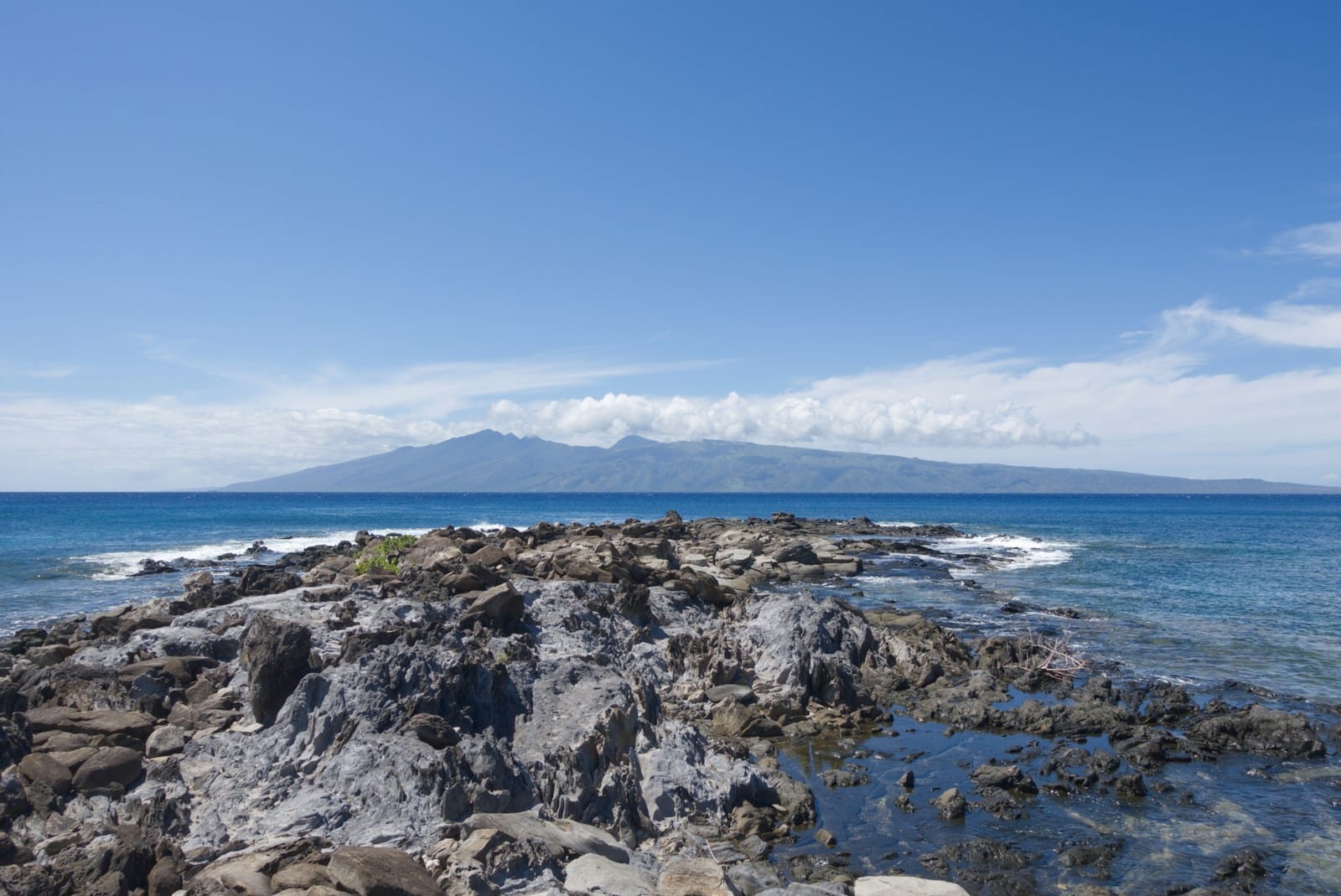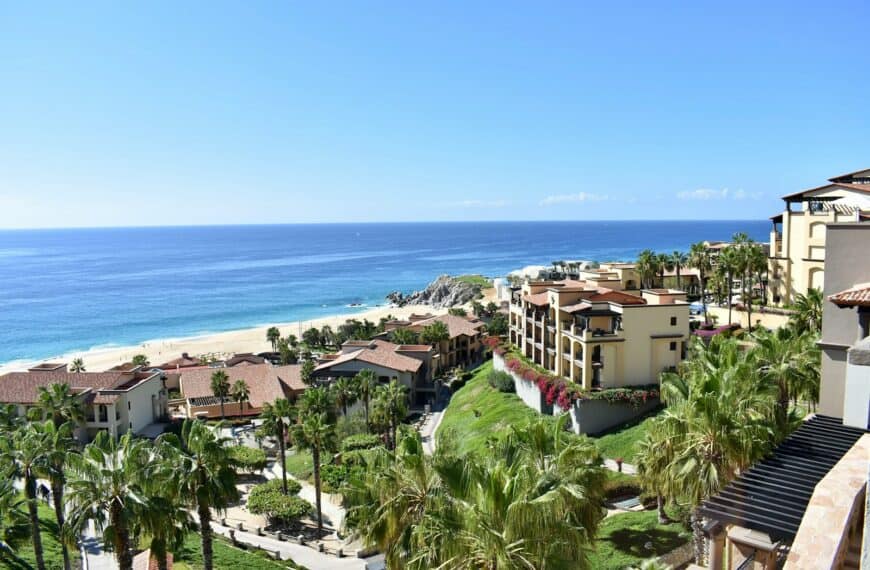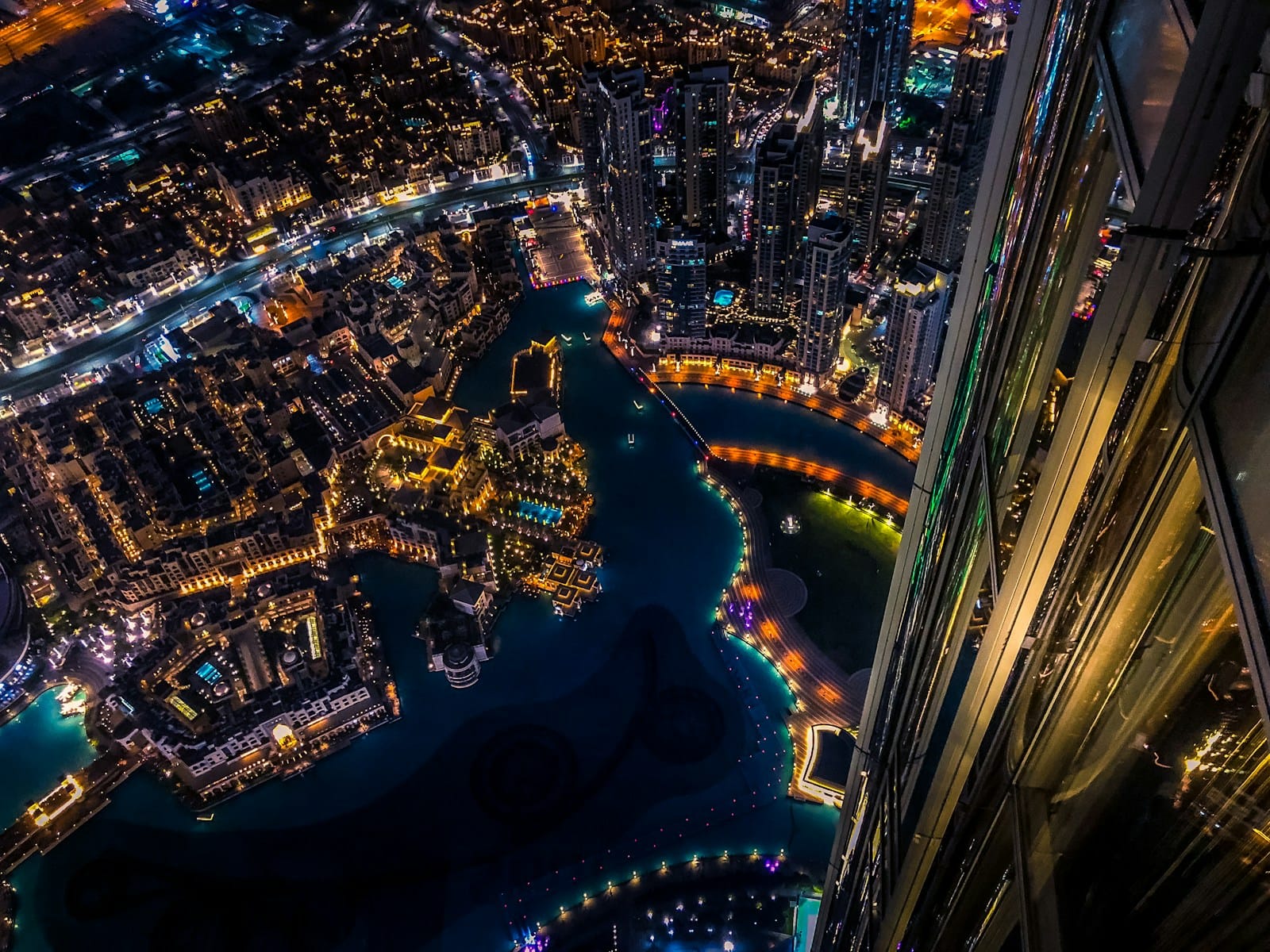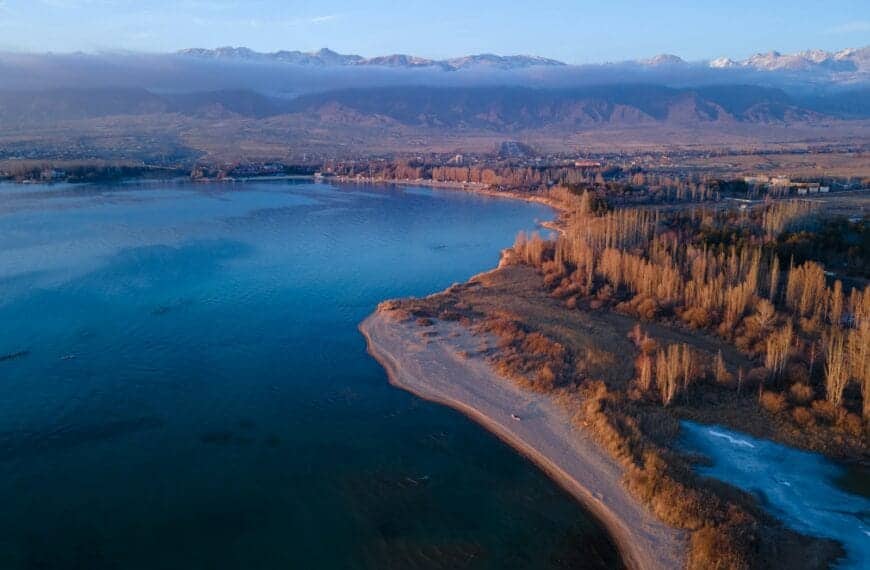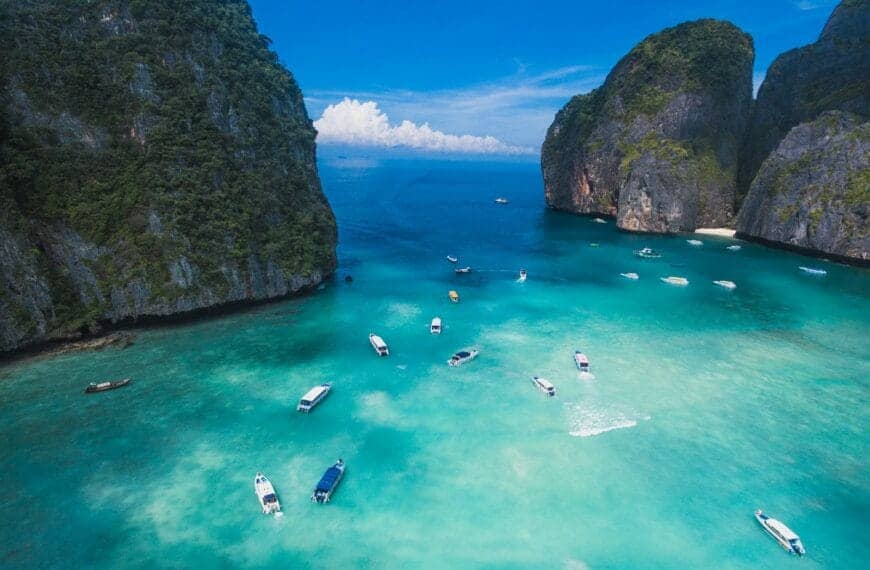Molokai Travel Guide: Culture, Cliffs & Sea
Molokai is Hawaii without the crowds, without the mega-resorts — and without compromise on soul-stirring beauty. This Molokai travel guide takes you to the heart of the islands, where sacred valleys, towering sea cliffs, and tight-knit local communities keep tradition alive. It’s not about nightlife or luxury — it’s about connection, nature, and honoring place.
Often called “The Most Hawaiian Island,” Molokai is for travelers seeking authenticity. You won’t find shopping malls or tour buses — but you will find silence, aloha, and a deep sense of mana in the land.
Start your journey with our Molokai tour guide and discover an untouched Hawaii that honors culture, nature, and spiritual depth.
Cities to Explore in Molokai
Hoʻolehua | Kaunakakai | Kualapuʻu | Maunaloa | Ualapuʻe
💡Quick Facts:
Destination: Molokai
Continent: North America
Country: United States
State: Hawaii
County: Maui County (Molokai, Maui, Lanai, Kahoolawe – uninhabited)
Area: 673 km²
Population: ~7,400
Density: ~11/km²
Largest Town: Kaunakakai
Official Language: English
Regional Languages: Hawaiian, Hawaiian Pidgin (Creole)
Currency: U.S. Dollar (USD)
Time Zone: Hawaii Standard Time (UTC-10, no daylight savings)
Known For: Kalaupapa National Historical Park, world’s highest sea cliffs, Papohaku Beach, traditional Hawaiian culture, minimal tourism development
Airports: Molokai Airport (MKK)
Climate: Tropical; warm year-round, drier west coast and wetter east
🛂Arrival Info:
Entry: U.S. entry rules apply (visa/ESTA for international arrivals via mainland).
Air Access: Molokai Airport (MKK) served by interisland flights from Honolulu and Maui.
Ferries: Passenger ferries discontinued; only cargo ferries operate.
Access Restrictions: Kalaupapa requires advance permit; visitors must join guided tours.
🏥Health Info:
Vaccines: Routine U.S. requirements only.
Medical Facilities: Molokai General Hospital (Kaunakakai), limited services; serious cases medevaced to Oahu.
Risks: Strong sun, ocean currents, rural driving conditions.
Insurance: Recommended due to limited local care.
🚑 Check travel insurance options for travel emergencies, delays, and medical needs abroad — Get coverage here
💉 Stay Informed with Official Updates: WHO – International Travel & Health | CDC – Travel health updates
🚨Travel Advisory:
Safety: Very low crime; rural community atmosphere.
Natural Hazards: Flash flooding in valleys, powerful surf in winter, limited lifeguards.
Visitor Notes: Respect local resistance to large-scale tourism; community values preservation.
🌍Track Real-Time Official Updates: US Travel Advisory | UK Foreign Travel Advice | Government of Canada | NZ SafeTravel
🥳Holidays:
(Molokai observes U.S. federal + Hawaii state holidays)
Prince Kuhio Day: March 26.
Kamehameha Day: June 11.
Admissions Day: 3rd Friday in August (Hawaii state holiday).
Thanksgiving: 4th Thursday in November.
Christmas Day: Dec 25.
Molokai Ka Hula Piko Festival: Annual June celebration of hula’s origins.
💰Visitor Info:
Currency: U.S. Dollar; ATMs limited outside Kaunakakai.
Costs:
Budget: $70–100/day
Mid-range: $120–200/day
Limited luxury options (few small lodges, vacation rentals)
Tipping: 15–20% restaurants, $2–3 per bag for porters.
Tourism Style: Guesthouses and small inns; no high-rise resorts.
🛫Airports:
Moloka‘i Airport (MKK)
Location: ~11 km (7 mi) northwest of Kaunakakai
Type: Regional; no international flights
Airlines: Mokulele Airlines (from Maui, O‘ahu)
Transport Options: Rental cars, taxis (limited), local shuttles
🧳 Delayed or canceled flight? Check if you’re eligible for compensation
🚍Transport:
Car Rentals: Best option; limited availability, book early.
Public Transit: None; occasional taxis in Kaunakakai.
Cycling: Feasible but roads are narrow; distances long.
Driving: Relaxed, rural pace; few traffic lights.
🚗 Book reliable airport transfers and in-city rides in advance. Reserve your ride here
🛰️Connectivity:
SIM/eSIM: All U.S. carriers (Verizon, AT&T, T-Mobile) function; coverage weaker in east valleys.
Wi-Fi: Available in hotels, cafes, library.
Roaming: Domestic for U.S. phones; international roaming high.
🛜 Stay connected abroad with affordable eSIM data packs. Get your eSIM here
📜Laws & Etiquette:
Drinking Age: 21.
Smoking: Banned in public indoor areas.
Culture: Deeply rooted Hawaiian traditions; respect kapu (sacred sites).
Tourism Ethos: “Slow down” culture; prioritize respect for land and community.
LGBTQ+: Legal protections under Hawaii law; community conservative in rural settings.
👮Emergency Info:
Emergency Number: 911.
Hospital: Molokai General Hospital, Kaunakakai.
Police: Maui County Police Department – Molokai Division.
Tourist Info: Molokai Visitors Association, Kaunakakai.
🏛️ Use embassy locator tools: Embassies Worldwide
🌞Weather:
Dry West Side: Sunny, beaches like Papohaku; daytime highs 28–32°C.
Wet East Side: Rainforests, waterfalls; cooler nights.
Year-Round: Temps 24–31°C, trade winds moderate humidity.
Best Months: April–October for dry conditions; winter for whale watching.
🌦️ Stay prepared—check the weather forecast for your destination — Weather Forecast
Molokai Cities & Major Destinations
Molokai has no cities — just small towns and natural communities that reflect the island’s deeply local way of life.
- Kaunakakai
The island’s main town and port, Kaunakakai is where you’ll find the essentials: grocery stores, local restaurants, and harbor views. Don’t miss Kanemitsu’s Bakery for their legendary hot bread. - Maunaloa
Located in the west, this former plantation town offers beautiful pasture views and is near Papohaku Beach. The Hotel Molokai and Molokai Ranch once operated here; today, it’s quiet and residential. - Halawa Valley
At the eastern tip of Molokai, this sacred valley is home to waterfalls, cultural tours, and some of the oldest Hawaiian settlements. Accessible by a stunning coastal drive. - Kalaupapa Peninsula
A powerful historic site once home to a leper colony. Today, the Kalaupapa National Historical Park preserves its story — accessible by guided hike, mule ride, or small plane. - Kualapuʻu
Home to the island’s coffee plantation and the scenic reservoir, this central village offers views, slow rhythms, and access to agricultural landscapes.
How to Choose Where to Go in Molokai
Molokai’s experience is more about what not to do — no resorts, no schedules, no stress. Still, different areas offer different perspectives on this quiet island.
- For Quiet Oceanfront Stays
Stay near Kaunakakai for access to the harbor, food, and flat beaches — ideal for those who want convenience without sacrificing peace. - For Nature & Spiritual Exploration
The East End, including Halawa Valley and the scenic Kamakou Preserve, is perfect for hiking, waterfalls, and deep cultural tours. - For Beach Time & Seclusion
The West End offers remote sands like Papohaku Beach and wide open skies. Best for self-catering travelers seeking solitude. - For Cultural Immersion
Visit Kalaupapa and surrounding cliffs. Book in advance — you’ll learn from descendants of residents, Native Hawaiians, and National Park rangers preserving this emotional place. - For Agriculture & Coffee Country
The Central Plateau and areas around Kualapuʻu are perfect for scenic drives, short hikes, and touring Molokai’s working farms.
Natural Escapes & Scenic Highlights
This is the soul of any Molokai travel guide — land, sea, and cliffs as the ancestors saw them.
- Halawa Valley
The island’s most sacred and picturesque area. Guided hikes with local families lead you to the twin Moaʻula and Hipuapua Falls while sharing generational knowledge. - Kalaupapa Cliffs
The world’s tallest sea cliffs, rising over 3,900 feet. You can hike down via a series of switchbacks (permit required), fly in, or view from the Palaʻau State Park lookout. - Papohaku Beach
Three miles of golden sand — one of Hawaii’s largest beaches and often nearly empty. Swim with caution due to current, but perfect for sunsets and beach walks. - Kamakou Preserve
Part of the Nature Conservancy, this cloud forest is reached by 4WD on a muddy mountain road. Rare plants, endemic birds, and boardwalk trails reward those who make the trek. - Moaʻula Falls
Reached via guided hike through Halawa Valley, this towering cascade flows through rainforest and ancient taro terraces. - One Aliʻi Beach Park
A peaceful spot near Kaunakakai, good for family picnics, fishing, and watching canoe paddlers train. - Murphy’s Beach (Kumimi Beach)
Clear, calm waters make this East End beach one of Molokai’s best spots for snorkeling. Expect locals, not crowds.
Cultural & Historic Landmarks
Molokai’s past shapes its present. These are the places where culture, resistance, and tradition remain alive.
- Kalaupapa National Historical Park
A former quarantine settlement for people with Hansen’s disease (leprosy), Kalaupapa is one of the most moving places in Hawaii. Learn about Father Damien and Mother Marianne Cope, who lived and cared here. - Kaunakakai Wharf
Once used for sugar exports, now a local fishing spot and sunset stroll area. Still active with inter-island shipping and Molokai ferry history. - Kapuaiwa Coconut Grove
A royal coconut grove planted in the 1860s by King Kamehameha V. It’s a spiritual site — look, but don’t enter or disturb the grounds. - Molokai Museum & Cultural Center (Kalaʻe)
Small but impactful — see sugar plantation artifacts, local history exhibits, and one of Hawaii’s only remaining steam engines. - St. Joseph Church (Kamalo)
Built by Saint Damien, this humble church still stands today as a spiritual site and symbol of Molokai’s Catholic Hawaiian history. - Fishponds of Molokai
Ancient Hawaiian aquaculture systems still in use today. Some are visible along the East End; others offer educational visits (book ahead).
Local Food, Arts & Experiences
Molokai isn’t flashy, but it’s flavorful — rooted in local produce, family-run kitchens, and traditional practices.
- Molokai Hot Bread (Kanemitsu Bakery)
An iconic late-night tradition — fresh loaves stuffed with butter, cinnamon, or cream cheese. Served through a back-alley window in Kaunakakai after dark. - Kumu Farms
Shop or tour this local organic farm selling papayas, banana bread, and vegetables. Located near the airport. - Molokai Burger & Local Eateries
Small, no-frills places like Molokai Burger or Manaʻe Goods & Grindz serve hearty plate lunches, poke, and homemade pies. - Art from Native Practitioners
Locally woven lauhala, kapa cloth, and lei workshops may be available through the community. Respect is key — don’t assume photos or access without permission. - Hoʻolehua Post-a-Pineapple
Send a fresh pineapple in a box from the Hoʻolehua Post Office. Sweet, unusual, and 100% Molokai. - Molokai Coffee Plantation Tour
At Coffees of Hawaii in Kualapuʻu, taste shade-grown beans and browse the gift shop, often with live music or hula.
Must-See Experiences in Molokai
These are the unforgettable, only-on-Molokai moments that make the journey worth it.
- Hike to Kalaupapa Peninsula
Descend 26 switchbacks over 3.5 miles to the remote settlement below the world’s tallest cliffs. A physical and emotional journey. - Snorkel at Murphy’s Beach
Gentle waves, vivid fish, and shallow reefs — perfect for beginners and anyone seeking calm waters. - Visit a Heiau or Ancient Fishpond
See and reflect at sacred spaces like Iliiliopae Heiau or one of the restored loko iʻa (fishponds) — rare and deeply important in Hawaiian culture. - Horseback Riding at Paniolo Ranches
Ride through ranchlands in Maunaloa or Kualapuʻu with sweeping views of valleys and sea. - Stargazing on the West End
Without light pollution, Molokai’s sky comes alive. Watch Milky Way swirls over Papohaku Beach — no telescope required. - Attend a Local Hula Performance
Check community bulletin boards for performances or festivals — often hosted at local churches, schools, or cultural centers.
Discover top-rated Molokai tours and experiences, and explore the best things to do in Molokai — from waterfall hikes and sea cliffs to traditional farms and cultural sites. Book early for exclusive access and flexible cancellation.
Getting Around Molokai
No traffic lights, no rideshare apps — but plenty of scenic roads and aloha.
- Car Rentals
Essential. Reserve in advance — especially 4WD if planning to visit Kamakou Preserve or remote West End beaches. - Biking
Possible for fit riders around Kaunakakai and East End, but be prepared for heat and lack of bike lanes. - Taxis & Shuttles
Very limited. Some lodging offers airport transfers, but don’t rely on spontaneous transport. - Small Flights
Flights to Kalaupapa are the only way to reach that peninsula besides hiking. Operated by Mokulele Airlines or charter providers.
Best Time to Visit Molokai
Molokai is wonderful year-round, but weather and activity levels shift seasonally.
- Spring (March–May)
Dry, sunny, and green — waterfalls flow, flowers bloom, and crowds are minimal. Ideal for hikers and photographers. - Summer (June–August)
Warmest time of year. West End beaches are swimmable and evenings stretch late. Expect stronger sun and calm seas. - Fall (September–November)
Peaceful and warm. Perfect for snorkelers, slow travelers, and off-season pricing. Light rains begin. - Winter (December–February)
Rough seas but lush valleys. Whale watching possible offshore. Great time for spiritual retreats and cultural experiences.
The best time to visit Molokai is spring or early fall — great weather, lower travel cost in Molokai, and fewer visitors.
Best Travel Itineraries in Molokai
Keep it simple — the island doesn’t do rush.
3-Day Culture & Nature Escape
- Day 1: Arrive + Kaunakakai + Papohaku sunset
- Day 2: Halawa Valley guided hike + beach swim
- Day 3: Visit Kalaupapa or explore Kamakou Preserve
5-Day Deep Dive Itinerary
- Stay near Kaunakakai or East End
- Include Molokai tours of cultural sites, beaches, taro farms
- Add a horseback ride, fishpond visit, and hot bread night
7-Day Full Island Stay
- Split time between East End and West End
- Day trips to waterfalls, heiaus, stargazing, and slow drives
- Optional hiking or flights to Kalaupapa for history lovers
Travel Safety & Etiquette in Molokai
Respect and awareness are everything here.
- Respect Sacred Lands
Don’t enter heiau or sacred areas unless invited. Ask permission before photographing locals or community events. - Limited Cell & Internet
Signal is weak in rural areas. Download maps and itineraries in advance. - Beach Safety
West End beaches can have strong currents. Swim only when conditions are calm. - Support Local
Buy direct from farmers, artists, and family-run shops. Avoid big-box online orders when possible. - Dress Modestly in Towns
Cover up when entering local stores or churches — even coming from the beach.
Nearby States to Explore
Molokai pairs well with other Hawaiian islands for a diverse trip.
- Maui
Just a short flight or ferry (when operational), Maui offers contrast with resorts, crater hikes, and road trips. - Oʻahu
Urban energy meets history — museums, surf, and Pearl Harbor make it a great entry or exit point. - Big Island (Hawaiʻi)
For volcanoes, black sand beaches, and night diving with manta rays, the Big Island adds adventure. - California
Many direct flights to Hawaii originate here — add beaches, redwoods, or wine country to your trip.
Final Planning Checklist for Molokai
- Book Molokai tours early, especially Halawa and Kalaupapa
- Reserve car rental in advance — options are very limited
- Pack reef-safe sunscreen, reusable water bottles, and cash
- Respect quiet hours, sacred spaces, and island customs
- Visit the local farmers market for island-grown gifts
- Don’t plan a packed itinerary — Molokai rewards stillness
- Bring mosquito repellent for valleys and wet areas
- Download offline maps and guides for rural navigation
- Check weather before hiking Kalaupapa or cloud forest trails
- Give back — tip guides well, support local nonprofits, travel mindfully
For more expert travel tips, practical strategies, and trusted tools — visit our Homepage and get inspired for your next trip.

